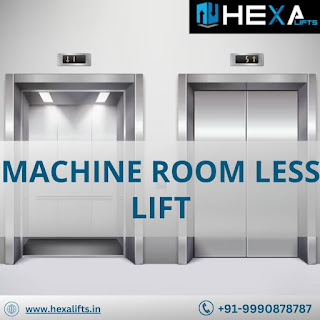Things to consider before lift installation
A lift installation is a substantial undertaking that needs careful thinking. Here are crucial considerations to keep in mind when installing a lift, whether it's for a home building, business space, or accessibility needs:
1.
Codes and rules: To
begin, familiarize yourself with your area's lift installation rules and codes.
Safety and legal observance are ensured via compliance.
2.
Purpose and Use: Clearly
state whether the lift is primarily intended for business utility, domestic
convenience, or accessible for people with disabilities. The kind and amount of
lift needed depends on the objective.
3.
Budget: Create
a thorough budget that accounts for all costs, such as the lift's price,
installation costs, prospective building changes, continuing maintenance costs,
and unanticipated costs.
4.
Lift sort: Select
the best lift for your unique requirements, such as a wheelchair lift, stair
lift, platform lift, hydraulic elevator, or pneumatic elevator.
5.
Space Availability: Determine if the building's available space can handle
the lift and any necessary apparatus, such as a machine room, pit, or shaft.
6.
Installation Location: Choose the best place for the lift, which may
require structural adjustments to accommodate the lift and its equipment.
7.
Capacity: Determine
the weight capacity based on anticipated loads to ensure the lift can safely
transfer people or products.
8.
Accessibility: If
the elevator is intended to improve accessibility, ensure it conforms with
relevant accessibility regulations, such as the Americans with Disabilities Act
(ADA).
9.
Maintenance and Servicing: Codes and rules: Schedule routine maintenance to
guarantee the lift runs effectively and safely for its useful life.
10.
Safety Features: Examine
the lift's emergency stop buttons, interlocks, alarms, and sufficient
illumination to ensure it has all the necessary safety precautions.
11.
Aesthetics: Pay
attention to the lift's design, mainly if it will be in a prominent place. Some
elevators may be modified to meet your home's interior design.
12.
Energy Efficiency: To
lower long-term running expenses and environmental effects, look for
energy-efficient models and features.
13.
Warranty and Service Contracts: Examine the manufacturer's warranty and
consider getting a service contract to take care of upkeep and repairs.
14.
Installation Timeline: Carefully plan the installation schedule to avoid
interference with routine activities or living arrangements.
15.
Suppliers and Contractors: Select reliable suppliers and contractors with
knowledge of lift installation and confirm that they are appropriately licensed
and insured.
16.
Permitting and Inspections: To prevent project delays and legal difficulties,
get the necessary permissions and arrange inspections.
17.
Establish explicit emergency guidelines for using lifts during power outages or
mechanical issues to prioritize occupant safety.
18.
Future Needs: When
planning the installation, consider any future needs like adding features or
altering the lift.
19.
User instruction: If
utilized in a business environment, provide staff or users thorough instruction
on correct lift operation and safety procedures.
20.
Sustainability: To
support environmental objectives, look for elevators with eco-friendly
features, including energy-efficient motors and lights.
When you choose us for Lift Installations in Noida / Ghaziabad/ Sonipat/ Gurugram, you can be confident that your lift installation project will be successful, satisfy your demands, and comply with safety and legal requirements.



Comments
Post a Comment